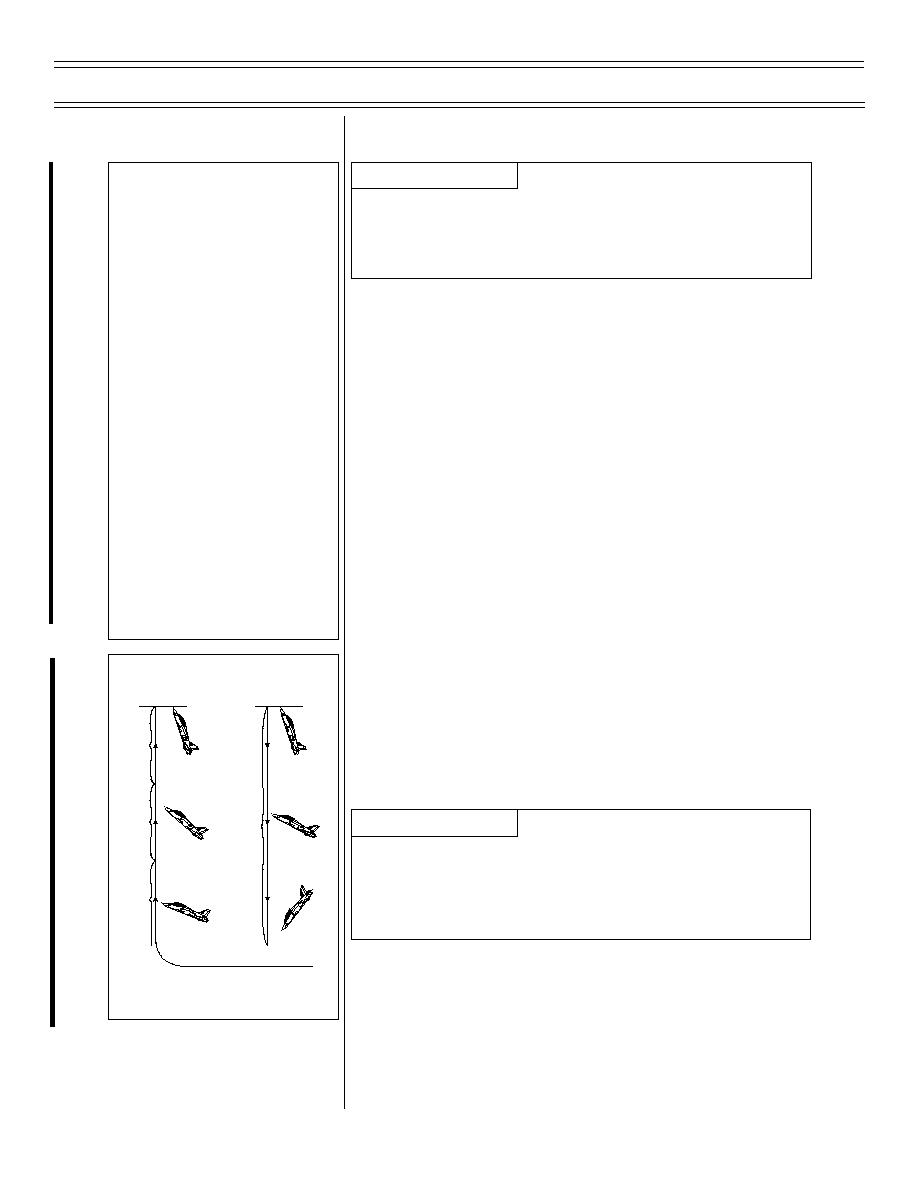
Out-of-Control Flight
T-45A UJPT, E2-C2, ADV, & IUT OCFFP-01
LESSON NOTES
Sg 2, fr 8
Because the T-45A has a fully powered elevator, there
LOW AIRSPEED
RECOVERY PROCEDURES
is no aerodynamic feedback.
1. 70-degree, nose-high
recovery
a. Start at 300 KIAS
minimum, no lower
than 16,000 ft AGL
F.
Low airspeed recovery procedures 10.7.4.1
b. Commence a smooth
1.
70-degree, nose-high recovery:
15-17 unit pull to 70
degrees nose up
a.
Start at 300 KIAS minimum, no lower
c.
Reduce power to idle
when passing 150
than 16,000 ft AGL
KIAS
d. Do not use trim in this
b.
Commence a smooth 15-17 unit pull to
maneuver
70 degrees nose up
e. Perform OCF
procedures at 50 KIAS
c.
Reduce power to idle when passing
150 KIAS
f.
Recover to nearest
horizon when passing
150 KIAS
d.
Do not use trim in this maneuver
e.
Perform OCF procedures at 50 KIAS
Sg 2, fr 9 (Animation)
O KIAS
O KIAS
f.
Recover to nearest horizon when
passing 150 KIAS
Negligible
Aerodynamic
Forces
Neutralize
Flight
LESSON NOTES
Diminished
Controls
Aerodynamic
Forces
Negligible
Aerodynamic
Forces
Aileron-induced departures occur because of the
adverse yaw and excess aileron deflection but without
Normal
Aerodynamic
the aggravation caused by applying opposite rudder.
Forces
ENTRY
RECOVERY
AERODYNAMICS OF LOW AIRSPEED DEPARTURE,
70 DEGREES NOSEUP
Page 1-18
(9-98) Original


 Previous Page
Previous Page
